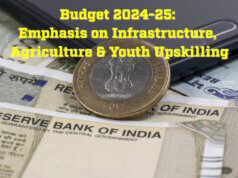
Managing Director
Pride Group
There is no getting away from the importance of infrastructure as a catalyst for real estate growth. Especially in terms of public transport and overall connectivity of areas, infrastructure is of paramount importance.
It is connectivity that enables people to live in a city’s further areas and yet reach their workplaces, and it is infrastructure that makes life bearable and dignified in these areas.
Many transport infrastructure projects that have been announced for Pune in the past are still hanging fire. With the arrival of the BJP into power, there are talks of the Congress-driven Jawaharlal Nehru National Urban Renewal Mission (JNNURM) being scrapped in favour of the “100 New Cities” agenda.
Meanwhile, a report on the planned Pune Metro was again submitted to the PMC in 2010 and has not been actioned, either. Even while new allotments for its expansion have been approved by the Ministry of Urban Development, other segments of the city’s Bus Rapid Transit System (BRTS) are undergoing safety audits because of doubts that have been raised about safety on roads.
Pune’s Ring Road
Nevertheless, some of the game-changing infrastructure projects for Pune are very much on track, and are consequently all set to boost the city’s real estate market in various key pockets.
Various flyovers in important areas are on track, as are a number of road infrastructure projects. One of these is the ambitious Pune Ring Road, which was formally given the green signal by the state government earlier this year.
Aimed at decongesting traffic on the roads connecting Pune and the Pimpri Chinchwad Municipal Corporation, the Ring Road, which will be developed on the time-tested PPP model, will inter-connect key thoroughfares such as the Pune-Nashik, Mumbai-Pune-Solapur, Pune-Ahmednagar and Pune-Satara highways.
Recently, the Pune Metropolitan Region Development Authority (PMRDA) executed a survey of the land—approximately 48 ha of which is owned by the government and about 25 hectares of privately held—which needs to be acquired for this vital road infrastructure project. Consequently, the Maharashtra State Road Development Corporation (MSRDC) is now gearing up to begin work on the 170 km Ring Road.
This and similar infrastructure projects are drawing a lot of interest from long-term property investors, expecting that these projects will turn a lot of locations into investment goldmines.
While the positive effect that transport infrastructure has on beneficiary locations is a proven market dynamic, property investors need to understand where this actually works on the ground, and where it does not.
Metro Stations: The True Picture
Let us first take the hypothetical case of locations in Pune that may eventually have metro stations. While it is generally assumed that property prices in these locations will rise astronomically, this is not necessarily a broad-spectrum truth.
It must be remembered that Metro and railway stations are essentially public transport nodes that involve massive movement of population as well as engines and tracks that result in significant noise pollution.
The noise, debris and congestion caused by the very process of setting up such terminals are only one side of the coin. The overall safety of such a location is also significantly reduced.
There are two reasons for this – one, vast numbers of people from all backgrounds move through them on a regular basis, and two – labourers who service the functioning of these transportation hubs tend to inhabit slum-like tenements in the immediate neighbourhood. These factors have been proven to exert considerable downward pressure on the demand for (and therefore valuations of) properties closest to these nodes.
It is only properties that are located at a reasonable distance from the chaos of such terminals which actually show significant appreciation, since they offer the combined benefits of increased connectivity without the undesirable fallout.
This dynamic is equally true for properties located around airports, as well. End users looking at the purchase of homes will invariably focus on areas that provide the advantages of the infrastructure in question but also offer reasonable living comfort.
Interestingly, while property pricing and capital appreciation tend to remain subdued in projects immediately adjoining such projects for the above reasons, there does tend to be an increase in the demand for short-term rental options in such locations, as many occupiers are less focused on prolonged residential comfort and place more value on fast transit.
New Road Infrastructure as ROI Driver
The entire scenario changes when we consider road infrastructure such as the upcoming Pune Ring Road. Roads are the preferred means of transportation by vehicle-owning local inhabitants, and do not involve the movement of large masses of population at a single spot. Nor do large highways cause bottlenecks of transient population; there is no reason for people to stop or otherwise congregate on these conduits, which merely boost connectivity. Nor does the servicing of these highways require support personnel to live in the immediate vicinity.
These factors automatically raise the safety as well as the convenience quotients for people living in localities that lie along or are connected by major highways.
Pune’s Ring Road will significantly improve commuting as well as goods transportation in Pune and the PCMC. Areas like Charoli, which has the added advantage of proximity to the Pune Airport without having it in the immediate neighbourhood, and other locations along the Ring Road will be easily accessible from the major existing employment hubs in Pune and Pimpri-Chinchwad.
The benefits that a ring road and similar highway projects bring to these locations, minus the inherent drawbacks of transport points such as metro and railway stations, have a direct and very positive correlation to the investment value of residential projects located in these areas.











